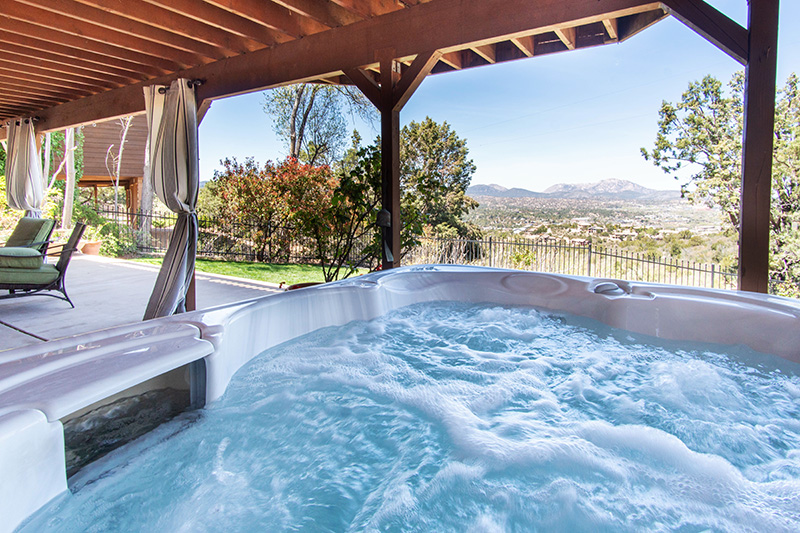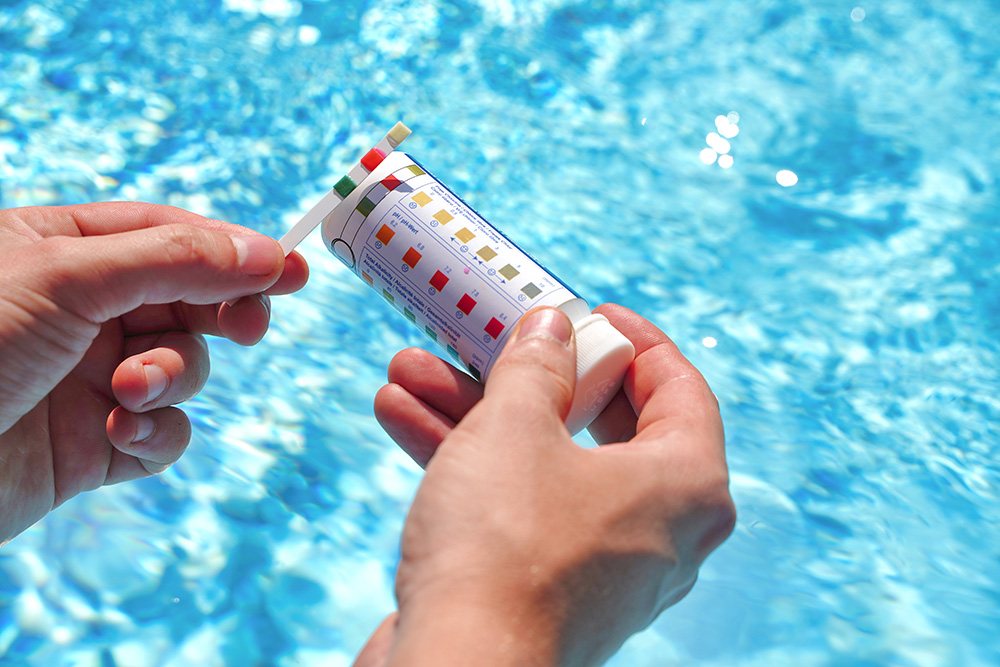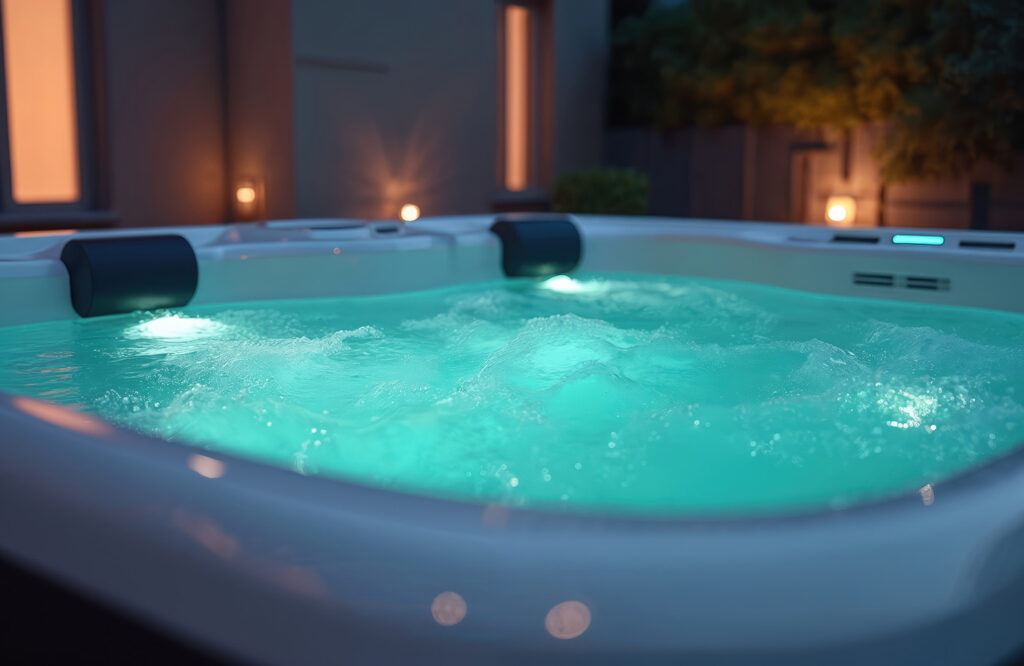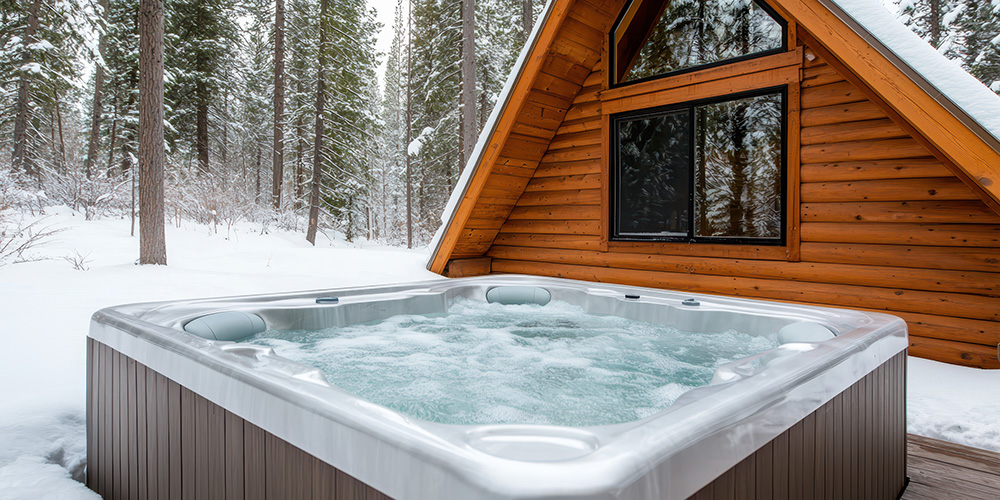Hot Tub Spa Maintenance: Complete Guide for Clean and Safe Water
Proper hot tub spa maintenance prevents 90% of common water problems, yet many owners find themselves overwhelmed by the daily reality of keeping their spa pristine. The truth is that hot tub maintenance doesn’t have to be complicated—it just requires understanding the fundamentals and following a proven system.
Unlike swimming pool maintenance, hot tub care demands more intensive attention due to higher water temperatures, smaller water volumes, and concentrated bather loads. Your hot tub’s 300-500 gallon capacity operating at 38-40°C creates the perfect storm for rapid chemical breakdown and bacterial growth if not properly managed.
This comprehensive guide will walk you through everything you need to know about hot tub spa maintenance, from the essential 3 Cs framework to detailed maintenance schedules that will keep your spa running efficiently for years to come.
Key Takeaways
- Follow the 3 Cs of hot tub maintenance: Circulation, Cleaning, and Chemistry for optimal spa performance
- Test water chemistry 2-3 times weekly and maintain pH between 7.4-7.6 for safe soaking
- Drain and refill your hot tub every 3-4 months to prevent Total Dissolved Solids buildup
- Clean filters every 1-2 weeks and replace annually to maintain proper water filtration
- Daily circulation for 15-20 minutes keeps water free from contaminants and bacteria
- Annual maintenance costs range from £200-£350 for chemicals plus professional servicing
Essential Hot Tub Maintenance Fundamentals
Before diving into specific maintenance tasks, you need to know your hot tub’s vital statistics. Record your spa’s make, model, and exact water capacity—this information is crucial for proper chemical dosing and troubleshooting. Most hot tubs hold between 300-500 gallons, but knowing your precise volume prevents under or over-treating your spa water.
Keep track of your installation date, filter type, and any unique water challenges in your area. Some regions have particularly hard water requiring additional scale preventers, while others may have high metal content demanding specialized treatment products.
Understanding that your hot tub requires more intensive care than a swimming pool is essential. The combination of high temperatures, smaller water volume, and concentrated use creates an environment where problems develop rapidly. A hot tub’s water temperature of 38-40°C accelerates chemical reactions, sanitizer breakdown, and bacterial growth rates compared to typical pool water temperatures.
The good news is that following a systematic approach makes hot tub maintenance manageable and highly effective. The industry-standard “3 Cs” framework—Circulation, Cleaning, and Chemistry—forms the foundation of successful spa care and prevents the vast majority of water quality issues.

The 3 Cs of Hot Tub Spa Maintenance
Think of your hot tub as a miniature aquatic ecosystem requiring daily attention across three critical areas. The 3 Cs framework simplifies hot tub care into manageable components that work together to maintain crystal-clear, safe soaking water.
Proper adherence to circulation, cleaning, and chemistry protocols prevents 90% of common hot tub water problems, from cloudy water and algae growth to equipment failures and costly repairs. Each component supports the others—poor circulation affects chemical distribution, inadequate cleaning leads to filter clogging, and unbalanced chemistry renders both circulation and cleaning less effective.
Circulation: Keep Water Moving Daily
Your hot tub’s circulation system is its lifeline, moving water through cartridge filters and ensuring even distribution of heat and chemicals. Most modern spas feature programmable, automatic filtration cycles, while older models may require manual pump activation.
Run your circulation pumps for at least 15-20 minutes twice daily. This minimum ensures water passes through your hot tub’s cartridge filters multiple times, capturing debris and maintaining uniform chemical levels throughout the spa. The constant water movement also prevents stagnant areas where bacteria and algae can establish colonies.
A practical tip many hot tub owners swear by is adding 2-3 clean tennis balls to your spa after each use. These floating helpers absorb body oils, lotions, and cosmetic residues that would otherwise accumulate on your hot tub filter or create unsightly scum lines on your spa’s shell.
Schedule your circulation cycles during off-peak electricity hours, typically between 11 PM and 7 AM, to minimize energy costs. Since many hot tubs are significant electrical appliances, this simple timing adjustment can noticeably reduce your monthly utility bills.
Cleaning: Maintain Spa Hygiene Weekly
Regular cleaning prevents the buildup of organic compounds, scum, and debris that can overwhelm your filtration system and create unsanitary conditions. Your hot tub clean routine should focus on both visible surfaces and hidden areas where contaminants accumulate.
Weekly, wipe your water line and seating areas with a white vinegar solution using a soft cloth. Vinegar’s mild acidity dissolves mineral deposits and soap scum without damaging your hot tub’s shell or leaving harmful residues. Never use household cleaners on spa surfaces, as these can cause permanent damage to acrylic finishes and contaminate your spa water.
For outdoor hot tubs, daily debris removal is essential, especially during autumn when leaves and insects frequently find their way into uncovered spas. Remove visible debris immediately after each use and before covering your hot tub to prevent organic matter from decomposing in the warm water.
Your spa cover requires monthly attention to prevent mildew growth. Clean it with a mild bleach solution (1:10 ratio) and rinse thoroughly. The humid environment under a hot tub cover creates ideal conditions for mold spores, making regular disinfection crucial for maintaining healthy air quality around your spa.
Chemistry: Balance Water Parameters
Hot tub water chemistry demands more frequent attention than pool water due to the accelerated chemical reactions at elevated temperatures. Test your spa water 2-3 times weekly using test strips or digital meters, and always check levels before each use after periods of non-use or heavy bather loads.
The target ranges for optimal water chemistry are:
- pH: 7.4-7.6 for user comfort and sanitizer effectiveness
- Total alkalinity: 80-120 ppm to prevent scaling and pH fluctuations
- Sanitizer levels: Chlorine 1.0-3.0 ppm or Bromine 2.0-4.0 ppm
When adjusting your hot tub’s water chemistry, always address alkalinity first, as it acts as a buffer preventing wild pH swings. Once your water’s alkalinity is stable, adjust pH using pH increaser (sodium carbonate) or pH decreaser (sodium bisulfate). Finally, adjust your sanitizer levels to maintain protection against harmful bacteria.
Never add water to chemicals—always add chemicals to water to prevent dangerous exothermic reactions. Distribute chemicals around your spa’s perimeter with pumps running to ensure rapid mixing and prevent localized concentration that could damage your hot tub’s shell or equipment.
Hot Tub Water Chemistry Management
The warm water environment of your home spa creates accelerated conditions for both chemical breakdown and biological growth. Understanding these dynamics helps you maintain crystal-clear, safe spa water while avoiding the frustration of persistent water quality issues.
At 38-40°C, chlorine and bromine degrade much faster than in cooler pool water, requiring more frequent testing and adjustment. This temperature range also provides ideal conditions for bacteria and algae to multiply rapidly if sanitizer levels drop below recommended ranges.
Test your hot tub water before each use, especially after the spa has been idle for more than 24 hours. During periods of heavy use—when four or more people use your hot tub regularly—daily testing becomes essential to maintain safe water conditions.
Essential Chemical Arsenal
Your hot tub chemicals arsenal should include pH adjusters, alkalinity increasers, sanitizers, and shock treatments. Understanding how each works helps you maintain water balanced for both safety and comfort.
pH increaser (sodium carbonate) raises acidic water, while pH decreaser (sodium bisulfate) lowers alkaline conditions. For alkalinity adjustments, use 1 tablespoon of sodium bicarbonate per 100 gallons to raise levels gradually—this prevents overshooting your target range.
Choose between chlorine granules, bromine tablets, or a saltwater system for ongoing sanitization. Bromine tablets often work better in hot tub environments due to improved stability at high temperatures and reduced odor compared to chlorine. However, chlorine granules offer more precise dosing control for smaller spa volumes.
Non-chlorine shock treatments using potassium monopersulfate oxidize organic compounds without raising sanitizer levels, allowing faster return to soaking after treatment. This flexibility makes non-chlorine shock ideal for daily use periods when you want to soak within a few hours of treatment.
Weekly Shock Treatment Protocol
Shock treatments burn off chloramines, bromamines, and organic compounds that regular sanitizers cannot eliminate. These oxidation treatments restore water clarity and eliminate the chemical odors that develop when sanitizers combine with organic contaminants.
Perform shock treatments every 1-2 weeks during normal use, and immediately after heavy bather loads or extended idle periods. Always add shock treatment in the evening when your hot tub won’t be used for at least 8 hours, allowing the oxidation process to complete fully.
Turn off air valves during shocking to prevent foam formation and speed chemical mixing. The agitation from air injection can create excessive bubbles that interfere with proper chemical distribution and treatment effectiveness.

Filter Maintenance and Replacement
Your hot tub’s cartridge filters are the first line of defense against contaminants, making their proper care essential for maintaining water quality and system efficiency. Neglected filters become clogged with debris, oils, and organic matter, reducing flow rates and forcing your circulation system to work harder.
Clean cartridge filters every 1-2 weeks by removing them and rinsing between pleats with high-pressure spray from a garden hose. Work systematically around each filter, ensuring water reaches all trapped debris in the pleated material.
Monthly deep cleaning requires soaking filters in a specialized filter cleaner solution. Mix filter cleaner according to manufacturer instructions—typically a 1:10 ratio—and soak filters for 12-24 hours. This chemical cleaner breaks down oils, lotions, and organic compounds that water alone cannot remove.
Filter Cleaning Process
Remove filters from your hot tub and rinse thoroughly with a garden hose using high-pressure spray. Focus on the pleated sections where most debris accumulates, working the spray between each fold to dislodge trapped particles.
After initial rinsing, spray filters with filter cleaner and allow the chemical cleaner to work for 15 minutes before final rinsing. This two-step process ensures both physical debris removal and chemical breakdown of stubborn residues.
For monthly deeper clean cycles, submerge filters completely in filter cleaner solution overnight. Use a plastic container large enough to fully immerse the filters, ensuring the cleaning solution contacts all surfaces. After soaking, rinse thoroughly with fresh water and allow filters to dry completely before reinstalling.
Consider rotating between two complete sets of hot tub filters to ensure continuous filtration while one set undergoes deep cleaning. This approach prevents any interruption in your spa’s filtration and allows adequate drying time for cleaned filters.
Replace filters annually or when they no longer return to their original white color after chemical cleaning. Frayed pleats, persistent discoloration, or continued water clarity problems despite proper cleaning indicate filter replacement is necessary.
Water Changing and Deep Cleaning Schedule
Total dissolved solids accumulate in hot tub water over time, creating conditions that no amount of chemical treatment can correct. These dissolved contaminants include everything from soap residues and dead skin cells to mineral deposits from your water supply.
Drain and refill your hot tub every 3-4 months under normal use conditions. Increase this frequency to every 2-3 months if you have heavy usage patterns—defined as four or more people using your hot tub multiple times weekly—or if you frequently entertain guests.
Before draining, run a line flush product through your circulation system for about half an hour. This pipe cleaning process breaks down biofilm—a thin layer of bacteria and organic matter that accumulates inside your hot tub’s plumbing—ensuring your fresh water starts in completely clean lines.
Complete Drain and Refill Process
Add line flush chemicals to your spa water and run all pumps and jets for 30 minutes, allowing the cleaning solution to circulate through every component of your hot tub’s plumbing system. This process removes biofilm, soap residues, and organic buildup from pipes, jets, and equipment.
Drain your hot tub using either the built-in drain valve or a submersible pump. A submersible pump reduces draining time from several hours to 15-60 minutes, making the process much more convenient and allowing you to complete the entire water change in a single session.
While your spa drains, prepare your cleaning supplies: soft cloths, spa-safe cleaners, and fresh water for rinsing. Avoid abrasive materials or harsh household cleaners that could scratch or damage your hot tub’s shell.
Once empty, clean the entire spa shell with soft cloths and spa-safe cleaners or diluted white vinegar. Pay special attention to the water line area where scum and mineral deposits typically accumulate. Rinse thoroughly with fresh water to remove all cleaning residues before refilling.
Refill your hot tub with fresh water and immediately begin balancing water chemistry. Start with alkalinity, then pH, and finally sanitizer levels. Your spa water must be fully balanced before use to ensure safe, comfortable soaking conditions.
Comprehensive Maintenance Schedule
Organizing hot tub maintenance into daily, weekly, monthly, and quarterly routines prevents overwhelming sessions while ensuring nothing important gets overlooked. Consistent scheduling is more effective than sporadic intensive cleaning sessions and helps identify potential problems before they become costly repairs.
Track your maintenance activities and water chemistry trends to identify patterns specific to your spa, usage, and local water conditions. This data helps you adjust timing and treatment levels for optimal results with minimal effort.
Daily Maintenance Tasks (5 minutes)
Check your hot tub’s temperature display to verify the heating system is functioning properly. Temperature fluctuations can indicate equipment issues or problems with your spa cover’s insulation efficiency.
Test sanitizer levels if your hot tub was used since the last testing. Maintaining consistent sanitizer levels prevents bacteria growth and ensures your spa water remains safe for the next use.
Remove any visible debris from the water surface using a small skimmer net. Leaves, insects, and other organic matter decompose quickly in warm water, creating additional sanitizer demand and potential water quality issues.
Verify your hot tub cover is properly secured when not in use. A properly fitted cover maintains temperature, prevents debris entry, and reduces chemical evaporation, significantly lowering your operating costs.
Weekly Maintenance Tasks (20 minutes)
Perform complete water testing using test strips or digital meters to check pH, alkalinity, and sanitizer levels. Record results to track trends and identify any recurring imbalances that might indicate equipment or water supply issues.
Add weekly shock treatment following manufacturer’s dosing instructions based on your spa’s water volume. This oxidation treatment eliminates organic compounds and chloramines that regular sanitization cannot address.
Clean visible surfaces around the water line using spa-safe cleaners and soft cloths. This prevents scum buildup and maintains the appearance of your hot tub’s shell while removing potential sources of contamination.
Rinse your hot tub filters with high-pressure water from a garden hose, working between pleats to remove trapped debris. Check water level and add fresh water as needed to maintain proper levels for effective circulation.
Monthly Maintenance Tasks (45 minutes)
Deep clean filters using chemical soaking followed by thorough rinsing with fresh water. This monthly deep cleaning removes oils, lotions, and organic compounds that regular rinsing cannot eliminate.
Inspect all hot tub jets for proper operation and debris accumulation. Clear any blockages and ensure water flow remains strong and even across all jets to maintain effective circulation patterns.
Clean your spa cover thoroughly, checking for tears, water damage, or signs of mold growth. Apply vinyl protectant to maintain the cover’s water resistance and insulation properties—303 Aerospace Protectant is widely recommended by industry professionals.
Service any supplementary sanitization equipment such as ozone generators or UV systems according to manufacturer specifications. These systems require periodic cleaning or component replacement to maintain effectiveness.
Quarterly Maintenance Tasks (3-4 hours)
Complete the full drain, clean, and refill process including line flushing, shell cleaning, and complete water chemistry balancing. This thorough refresh eliminates total dissolved solids and provides a completely fresh start for your spa water.
Replace cartridge filters or rotate to your second set of clean filters. Annual filter replacement ensures optimal filtration efficiency and prevents the gradual decline in water quality that occurs with aging filter media.
Inspect all plumbing connections, electrical components, and equipment for signs of wear, leaks, or damage. Address any issues immediately to prevent minor problems from developing into major repairs.
Check your hot tub’s GFCI operation and electrical safety systems. These critical safety components require periodic testing to ensure they will function properly in emergency situations.

Vacation and Seasonal Care
Preparing your hot tub for extended absences requires balancing water chemistry, temperature management, and system operation to maintain water quality while minimizing energy consumption. Proper vacation preparation prevents returning to green, cloudy, or malodorous spa water.
Before departing, add shock treatment and run all jets for 30 minutes to ensure complete chemical distribution throughout your hot tub’s water volume. This pre-treatment eliminates existing organic compounds that could decompose during your absence.
Increase sanitizer levels by approximately 50% above normal ranges to provide additional protection during your absence. The higher concentration compensates for natural sanitizer degradation and prevents bacteria or algae establishment while you’re away.
Summer Vacation Preparation
Lower your hot tub’s thermostat by 5-10 degrees to reduce energy consumption while maintaining circulation and preventing stagnation. The reduced temperature slows chemical reactions and bacterial growth while keeping your spa ready for immediate use upon return.
Ensure automatic filtration cycles continue running twice daily throughout your absence. Many hot tubs allow programming of multiple circulation periods, providing consistent water movement without manual intervention.
Verify your hot tub cover is properly secured and locked to prevent unauthorized access, debris entry, and heat loss. A properly maintained cover is essential for both safety and energy efficiency during extended absences.
Consider asking a trusted neighbor to visually check your spa periodically, looking for any obvious problems such as equipment malfunctions, unusual sounds, or cover displacement that might require immediate attention.
Winter Vacation Preparation
Maintain water temperature above 32°F (0°C) to prevent freeze damage to your hot tub’s plumbing and equipment. Even minor freezing can cause thousands of pounds in repair costs, making temperature monitoring critical during winter travel.
Reduce thermostat settings by up to 10 degrees while ensuring circulation pumps continue operating regularly. The combination of lower temperature and maintained circulation provides freeze protection while reducing energy consumption.
In regions with extreme cold conditions, check antifreeze levels in exposed plumbing components and consider additional insulation for vulnerable areas. Some hot tub owners add spa-safe antifreeze to their water as additional protection during extended winter absences.
For extended winter closures in freezing climates, complete winterization may be necessary, involving draining all water from the system and adding antifreeze to prevent damage. This process typically requires professional service to ensure proper completion.
When to Call Professionals
Schedule annual professional inspection for electrical systems, plumbing connections, and safety equipment testing. Qualified technicians can identify potential problems before they become emergency repairs, saving significant money and downtime.
Contact service professionals immediately for any unusual noises, visible leaks, or heating system malfunctions. These symptoms often indicate developing problems that require immediate attention to prevent major equipment damage.
Seek professional help for persistent water chemistry problems that don’t respond to standard treatment protocols. Chronic cloudiness, recurring algae blooms, or inability to maintain proper chemical balance may indicate equipment issues or water supply problems requiring expert diagnosis.
Have GFCI and electrical safety systems tested annually by qualified electricians. These critical safety components protect against electrocution and must function properly to ensure safe spa operation.
Professional winterization services become essential in freezing climates for seasonal closures or when owners lack confidence in proper winterization procedures. Improper winterization can result in catastrophic freeze damage, making professional service a wise investment.

Safety Protocols and Best Practices
Hot tub safety encompasses both chemical handling and operational procedures that protect users from injury and ensure enjoyable soaking experiences. Never exceed the maximum temperature of 40°C (104°F), as higher temperatures can cause heat stress, particularly dangerous for children, pregnant individuals, and those with cardiovascular conditions.
Children and non-swimmers require constant adult supervision around hot tub areas. The combination of hot water, potential slippery surfaces, and deep water creates multiple safety risks that demand vigilant oversight.
Keep all electrical appliances and glass containers away from your spa environment. The combination of water and electricity creates serious electrocution risks, while glass breakage in or around your hot tub poses significant injury hazards.
Store all hot tub chemicals in cool, dry, well-ventilated areas completely inaccessible to children and pets. Chemical exposure can cause serious burns, respiratory problems, and other health issues requiring immediate medical attention.
Chemical Handling Safety
Read and follow all manufacturer instructions before handling any spa chemicals. Each product has specific safety requirements, mixing restrictions, and application procedures that must be followed exactly to prevent dangerous reactions.
Never mix different dry chemicals, as this can create explosive or toxic gas reactions. Always add chemicals individually to your spa water, allowing complete mixing before adding additional products.
Use only plastic measuring tools and containers when handling hot tub chemicals. Metal implements can catalyze dangerous reactions, while plastic tools remain inert and safe for chemical contact.
Wash hands thoroughly after any chemical handling and store all products in their original containers with labels intact. Proper labeling prevents accidental misuse and ensures you can quickly identify products in emergency situations.
Wear appropriate protective equipment including gloves and safety glasses when handling chemicals, especially during windy conditions or when splash potential exists. Chemical contact with skin or eyes requires immediate flushing with clean water and potential medical attention.
FAQ
How often should I test my hot tub water?
Test water chemistry 2-3 times weekly when in regular use, daily during heavy use periods, and before each use after the spa has been idle for more than 3 days. Hot tub water chemistry changes rapidly due to high temperatures and concentrated use, making frequent testing essential for maintaining safe, comfortable water conditions.
Can I use regular household cleaners on my spa?
No, use only spa-safe cleaners as household products can damage acrylic surfaces and contaminate water. Many household cleaners contain harsh chemicals that can cause permanent damage to your hot tub’s shell, create foam, or leave residues dangerous to bathers. White vinegar diluted with water provides safe, effective cleaning for most spa surfaces and scum removal.
How do I know when to replace my spa filters?
Replace filters annually or when they no longer return to original color after chemical cleaning, show fraying edges, or fail to improve water clarity after cleaning. Even with proper maintenance, filter media gradually loses effectiveness, requiring replacement to maintain optimal filtration performance.
What’s the ideal hot tub temperature for energy efficiency?
Maintain 38-39°C (100-102°F) for regular use, providing comfortable soaking while minimizing energy consumption. Lower temperature 5-10 degrees during vacation periods to reduce energy costs while maintaining circulation and preventing water stagnation. Each degree reduction can significantly impact your monthly electricity costs.
Conclusion
Mastering hot tub spa maintenance doesn’t require technical expertise—it demands consistency, attention to detail, and adherence to proven protocols. The 3 Cs framework of Circulation, Cleaning, and Chemistry provides a simple yet comprehensive approach that prevents 90% of common spa problems while ensuring years of safe, enjoyable soaking.
Start implementing these maintenance practices today, beginning with establishing daily circulation routines and weekly chemistry testing. Consistency in small tasks prevents overwhelming problems and ensures your home spa remains a source of relaxation and enjoyment for years to come.
The key to successful hot tub ownership lies not in perfection, but in persistence. Keep your hot tub running efficiently by following these guidelines, and you’ll discover that proper spa maintenance becomes a simple routine rather than a daunting chore.
